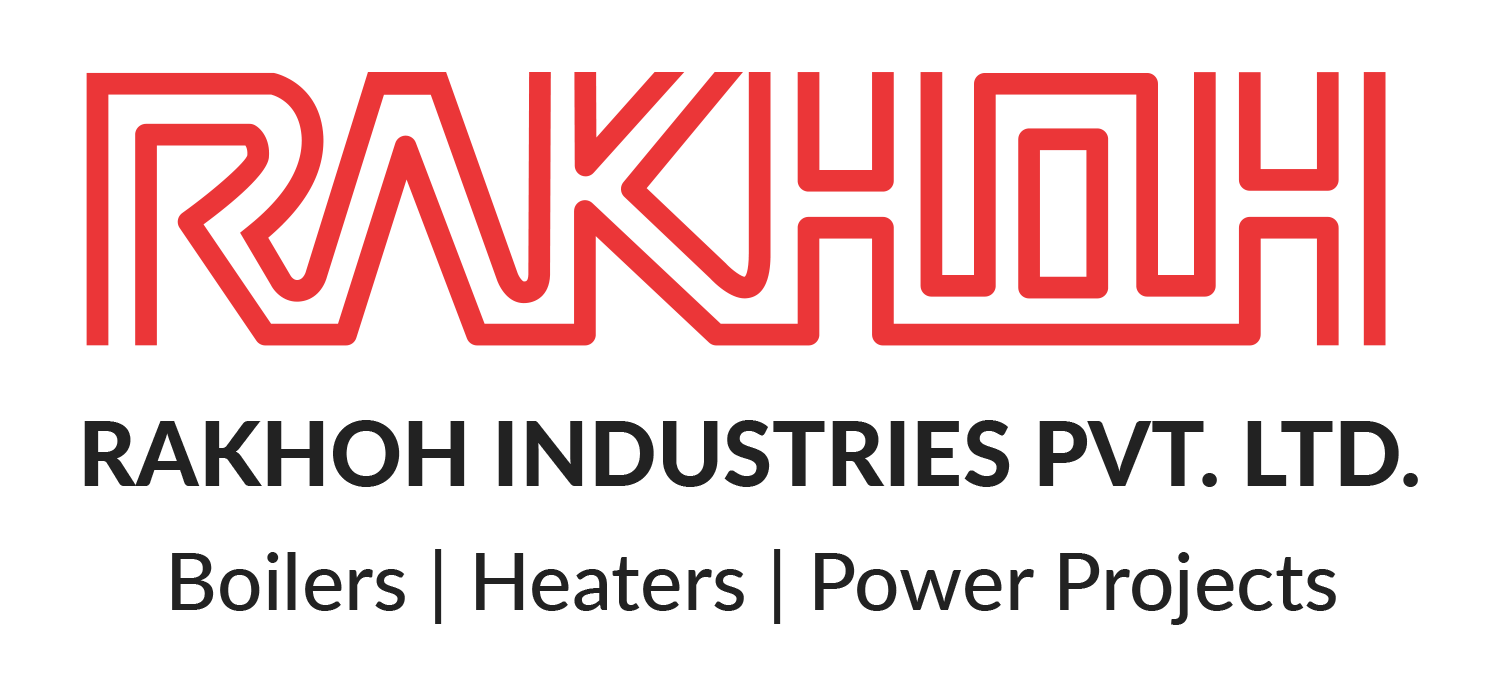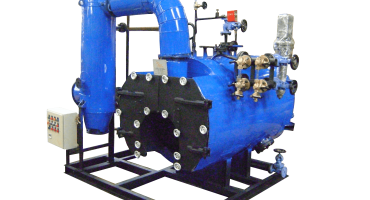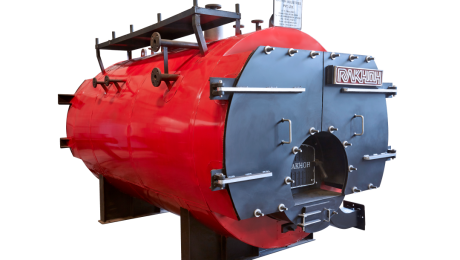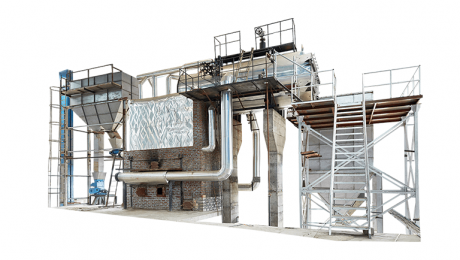Signs that indicate replacement for steam boilers
Steam boilers are vital equipment for steam generation in the process and manufacturing industries. Therefore, it is critical to know when it is time to replace an industrial boiler system. However, it is usually observed that facility managers wait for a steam boiler to break down entirely before replacing the unit. However, upgrading the steam boiler process plants can save a significant amount of money annually while also benefiting from increased efficiency and improved steam production when the boiler operates. Rakhoh Boilers being a trusted name as a boiler manufacturer in India has listed down some of the important signs that indicate the replacement of the steam boiler system.
Outdated Boiler System:
First and foremost, it is important to consider the lifespan of the steam boiler. If the boiler is older than 10-15 years, it is ideal to start looking for a replacement. It is true even if the boiler does not display any major faults. As the technology has advanced significantly in recent years, the old models are incapable of comparing with the efficiency levels, safety features, and smart control options of the latest steam boilers.
Frequent Breakdowns:
If there are occurrences of any type of boiler issues every week or topping up of the pressure, it indicates that things are about to change for the worst. The expenditure of the new parts, call-outs, and quick reparations can be spent much better on a replacement boiler that is efficient and reliable.
Boiler System Emits A Noise:
Sometimes, steam boilers are so outdated that the noises emitted from them are considered normal. On the contrary, the banging, gurgling, and kettling noises heard from the steam boiler indicate a boiler issue. If neglected, it can lead to severe damage in the process plant and breakdown over time.
Yellow-Colored Flame:
A steam boiler functioning properly ensures complete combustion with a blue flame. But, if the boiler flame is yellow, it means that there is a risk of carbon monoxide emission, which is a serious issue. It is a hazardous, odorless, and colorless gas that can prove to be fatal if exposure levels are overly high. The symptoms of carbon monoxide poisoning consist of dizziness, nausea, headaches, and fatigue.
Water Leakages:
If there are any water leakages in the steam boiler system, it can result in significant damage to other steam boiler components. Therefore, it is important to contact an engineer as soon as possible before things escalate and become dangerous.
Replacement Parts Difficult to Find:
If process plants find it difficult to procure the parts of the steam boiler for replacement, it is to be concluded that the system is outdated. It is a quite clear warning sign that the boiler’s days are limited, and replacement of the boiler is the need of the hour.
High Stack Temperature:
If the steam boiler faces unusually high stack temperatures, it is an indication of unsafe conditions and poor heat transfer. It may be caused due to poor water management, poor combustion, or low water level.
Poor Combustion:
Improper or insufficient airflow and fuel flow can lead to significantly noticeable pulsations and surges.
Reduction in Efficiency:
If the steam boiler system takes too long to operate or to generate steam, it showcases the inefficiency of the boiler system. In such situations, it is imperative to contact the boiler manufacturer for their expert guidance in replacing the system.
What is better– Replacement or Retrofitting?
Even if the steam boiler displays no decline in condition or performance, operations managers need to consider whether they should opt for a boiler replacement or retrofit. A boiler retrofit can offer the advantage of increasing the efficiency between 10% and 12%. On the other hand, a complete steam boiler replacement may offer even greater percentages depending on the boiler.
In either case, a retrofit boiler or a complete boiler replacement significantly reduces the future expenses of the process plant. Considering the average boiler consumes up to four times its original value in energy costs per year, it is easy to see how efficiency savings can quickly add up.
Conclusion:
Rakhoh Boilers is one of the trusted boiler manufacturers in Pune since 1983. With 38+ years of experience and expertise in thermal solutions, we deliver highly efficient and reliable industrial steam boilers, waste heat recovery systems, thermic fluid heaters, and boiler accessories to over 20 process industries in 26 countries worldwide. We provide excellent boiler services to boost the efficiency and productivity of the boilers.
Visit www.rakhoh.com for more details on our products and services
- Published in Boiler, Steam Boiler
Problems and their Solutions in Thermic Fluid Heaters
Thermic fluid heaters are gaining popularity in large industries due to their improved temperature control and reliability. Although steam boilers are still a vital asset for the manufacturing and process industries, thermic fluid heaters are slowly but surely emerging as preferred equipment. It offers enhanced performance, high temperature at low pressure, low maintenance, low operational cost, and minimal downtime. However, similar to steam boiler problems, thermic fluid heaters too face their share of issues that should be promptly addressed. Regular checking and maintenance of the equipment is the key to several issues. Some of the commonly found issues in thermic fluid heaters are as follows,
Problems during operations:
In the operation of a thermic fluid heater, the system provides radiant and convective heat to the heater tubing placed in the firebox. It is transferred to the film layer of the fluid through the tube wall. The fluid is in a turbulent state that causes the film layer to mix with the fluid and transfer the heat quickly. The high flow by the circulating pumps leads to swift transport of the heat by the fluid that returns at a lesser temperature to carry more heat.
At normal operations, the refractory and structural metal temperature is equal to the flame itself. After shutting down thermic fluid heaters, the heat in these components requires more time to radiate and exit the stack entirely. If the heater consists of excess refractory parts, it would require more time in radiating the excessive stored heat.
The fluid circulating after the shutting down of the heater carries the heat and distributes it to the entire system.
Boiling Point of Fluids:
The heat transfer fluids possess various boiling points, with larger molecules boiling at high temperature and smaller molecules at low temperature. The natural convection currents continue to flow in the firebox even after the flame is turned off. It causes the internal temperature to remain sufficiently heated for the mid-sized and smaller molecules of the fluid to vaporize. With smaller molecules boiled, the remaining large molecules continue to exist. The higher percentage of molecules reflects the higher viscosity of the heat transfer fluid.
As the liquid becomes thicker, it is hindered in flowing quickly through the thermic fluid heater and requires more horsepower for obtaining the flow. The slow-flowing fluids continuing to remain in contact with the heating surface results in reducing the system performance and overheating and damaging the thermic fluid system.
When the flow is reduced, it leads to increasing the temperature of the fluid’s film layer. It causes fluid degradation, and gradually, fouling of the thermic fluid heater with deposits and sludge.
Improper Shutdown:
When the thermic fluid heater is shut down entirely, the heater does not fire and the pump stops circulating the fluid. It results in transferring the stored heat in refractory and structural metal parts to the firebox. The heat does not exit the stack immediately after turning off the blower that causes extreme heat in the heater tubing that consists of heat transfer fluid.
Power Failures:
In case of power failure, it must be ensured to tie in the blower and circulating pump of the thermic fluid heater while using emergency power. Emergency power hook-up is cost-effective as compared to the expense of thermic fluid heater replacement.
Maintenance of Thermic Fluid Heaters:
Like every other industrial equipment, a thermic fluid heater needs regular maintenance and servicing for hassle-free performance. Factors that must be taken into account for efficient operations are:
Inspecting Insulation:
Proper insulation is vital for effective operations in thermic fluid heaters. It is essential to check that the heater insulation is in place and acceptable conditions.
Assessment of Piping:
A thermic fluid heater consists of multiple piping in it. Therefore, it is necessary to check the piping for any leakages, weak spots, or other flaws requiring repair or replacement.
Annual Inspection:
It is imperative to inspect the thermic fluid system annually under the guidance of a boiler manufacturer or professional to ensure its proper functioning. It is advisable to inspect and tune the burners for efficient performance.
Smooth functioning and preventing any mishaps are the primary concerns of every plant manager. To attain such goals, it is necessary to check the thermic fluid system by regular maintenance and repairing. In severe damage or issues, seek a professional boiler manufacturer for assistance and advice if a thermic fluid heater might be a better alternative than reparation.
Since its inception in 1983, Rakhoh Boilers have emerged as a leading boiler manufacturer and thermal solution provider. We manufacture a range of efficient industrial steam boilers, waste heat recovery systems, thermic fluid heaters, and boiler accessories. With over 3000+ successful boiler installations globally and our remarkable services, we have carved our reputation as a trusted boiler supplier.
To learn more about our products and services, visit our website www.rakhoh.com
- Published in Boiler, Thermic Fluid Heater
Design and Role of Fusible Plugs in Fire tube Boilers
Steam boilers are classified into two types, namely fire tube boilers and water boilers. As the name suggests, fire tube boilers function by flue gases passing through fire tubes immersed in water, whereas water tube boilers operate by water flowing through water tubes placed in a firebox. Steam boilers are an important asset for the process operations in the industries but can be a potential bomb if left overlooked. Boiler explosions can cause tremendous loss and injure the operating personnel. Therefore, boilers include safety equipment to avoid any hazardous mishap. One such equipment is the fusible plug that prevents the exceeding temperature in fire tube boilers resulting in a boiler explosion.
What is a Fusible Plug?
A fusible plug is equipment that boosts the safety of the steam boiler and acts as a warning device against overheating. Fusible plugs are found in fire tube boilers and are usually considered the last resort or warning to avert any hazardous failure such as a boiler explosion. Just like safety valves help to protect the boiler system from overpressure, fusible plugs help to safeguard steam boilers from over temperature. Fusible plug is widely acknowledged as the preferred safety equipment for fire tube boilers by many industries due to its simple design, effectiveness, and improvement in safety.
Design and Material of Fusible Plug:
Fusible plugs include a fusible alloy made of tin material. The fusible plug itself is made of brass, bronze, or gun material with a threaded plug body that makes it easy to install. It is a hollow gun metal plug screwed at the apex of the firebox. The main metal plug and hollow gun metal plug are separated through an annulus fusible material. A flange protects the material from the fireside. The fusible plug has a high melting point, while the fusible alloy has a low melting point of 232°C (450°F).
The Role of the Fusible Plug:
The fusible remains immersed in water with the water in the fire tube boiler at a normal level. As the temperature does not reach the melting point of the fusible alloy, the heat is transferred to the water. As the temperature in the boiler increases, the water level starts decreasing and generates steam. On the other hand, the fusible plug above the firebox gets overheated by the exceeding temperature, and the fusible alloy starts melting. It results in steam and water immediately rushes through the fusible plug to extinguish the fire in the firebox, thus preventing boiler explosion. The fusible plug body is shaped in a way to alert the operating personnel of system pressure vents by a whistling sound. Fusible plugs reduce the possibility of boiler accidents taking place due to low water firing. The low water level in the boiler system leads to overheating of the heat transfer surfaces that can cause catastrophic accidents. It is advisable to replace the fusible plug after two years as they probably get defective after a long period of use.
Where is the Fusible Plug Installed?
Fusible plugs in fire tube boilers are located around 1 to 2 inches above the top row of tubes. Usual locations for the fusible plugs include the crown sheet i.e., the apex of the combustion chamber, rear tube sheet, and front tube sheet. The fusible plug location depends on the boiler design.
Faults and Inspection of Fusible Plugs:
Conclusion:
Rakhoh Boilers are one of the globally leading boiler manufacturers for more than 38 years. We have provided efficient and reliable water tube boilers, fire tube boilers, waste heat recovery systems, thermic fluid heaters, and boiler accessories for over 20 process industries worldwide. With proficiency in thermal solutions, we offer the best boiler services like energy audit, steam trap assessment, boiler automation, annual boiler maintenance, etc., that enhances the productivity and lifespan of the boiler.
To know more about our products and services, visit www.rakhoh.com
- Published in Boiler, Steam Boiler
Causes and Issues of Low Water Conditions in Steam Boilers
Steam Boilers are of paramount importance in the process and manufacturing industries. However, merely the excellence of the boiler manufacturer does not assure the boiler’s safety. The boiler system also requires precision in handling and operations to prevent hazardous consequences. Although plant managers take every precaution to ensure the safety of the plant and the personnel, some boiler issues are inevitable and require immediate action. Despite the usage of steam boilers in industries from the mid-1800s, process plants continue to face common issues with their operation.
-
Some of the most common boiler issues include:
- Low water conditions
- Improper techniques of blowdown
- Improper warm-up
- Poor water treatment
- Training of operating team
- Neglect of preventive maintenance
- Proper documentation
- Overlooking outdated equipment
- Manual factor
Low Water Conditions in Steam Boilers:
Facing low water in a boiler system is a hazardous situation but can be easily prevented with proper maintenance and precautions. The low water level in a steam boiler occurs when the water reaches below the base safe, that is the working level recommended by the boiler manufacturer. With the low water level, the tubes remain exposed and no longer cooled by the boiler water. It leads to the rapid increase of the metal temperature, resulting in reducing the metal’s strength and causing rupture as the metal’s strength decreases.
The likelihood of severe or even catastrophic damage to a steam boiler due to low water conditions is easy to understand, considering that the temperature of the furnace exceeds 1,800 oF., yet, the steel strength drops significantly at temperatures above 800 oF. The only factor that enables a boiler system to withstand the furnace temperatures is water in or around (depending on whether the boiler is a fire tube or a water tube design) the pressure parts at all times when a fire is present. Therefore, low water conditions can melt the steel pressure parts.
Generally, industrial steam boilers are natural circulation boilers that do not use pumps for circulating water through the pressure vessel. The units depend on the varying density between hot and cold water for providing circulation. As the water eliminates heat from the pressure parts, the water temperature increases and rises to the steam chamber. As a result, sufficient heat is transferred, generating steam. Cold feed water replaces the rising water, causing natural circulation.
Because of the crucial need for water, advanced boiler systems are equipped with automatic low water trip switches. However, some outdated boilers do not include these relatively inexpensive devices. If the boiler does not have low-water trips, it is necessary to promptly initiate its installation to prevent any accidents and expensive repairs in the process plant. The resultant repairs can range from re-tubing to unit destruction if the overheating is neglected. In the situation of low water, the low water trips will trip the burner or fuel flow for solid fuel boilers and shut down the forced draft fan. It leads to shutting down the heat input.
The trips need to be installed at a water level to prevent damage. Low-water trips are installed at 6” lower than the acceptable operating level. The control of the boiler water level is challenging, and even the best-tuned control systems cannot ensure complete prevention of a low-water condition. The water level in a pressure vessel is, in fact, an unstable compressible mixture of water and steam bubbles that can shrink and swell with pressure changes and will ultimately shrink momentarily when more cold feedwater is introduced.
Some of the common causes of low water levels in the steam boiler are:
- Failure of feedwater pump
- Failure of control valve
- Water loss to the deaerator or make-up water system
- Failure of drum level controller
- The drum level controller is left in the manual position
- Plant air pressure loss to control the valve actuator
- Lifting of safety valve
- Large, sudden change in steam load
Impact of Low Water Levels On Steam Boilers:
Some of the commonly found damage caused by low water levels are:
- Loose tubes
- Cracked tubes
- Melted metal
- Leaking water
One of the most hazardous results of low water takes place when the water is added to the boiler, but the system has already passed the point of no return where the boiler vessel is significantly overheated. It causes the water to immediately turn into steam, resulting in extreme pressure being created, and the boiler potentially exploding. It is one of the most dangerous consequences in a process plant with any boiler system and should be prevented at all costs.
Prevention from Low Water Level:
Steam boilers should be fitted with low water cut-offs (LWCO) for detecting the low water condition and shut down the boiler to prevent the impact of low water levels. Additionally, controls need to monitor the water level and take appropriate action such as sounding the alarm, shutting down the burners, and the feedback supply. It is also crucial to provide an external indication of the water level.
A low level of boiler water is checked through the sight glass. It is the only visual available to check the steam boiler’s water level.
Some boiler systems use floating bulbs with the LWCO shutting down the boiler if the bulb hits the cutoff level. With a float system, the device must be regularly blown down to prevent buildup.
Some LWCO systems utilize a probe that enters directly into the water and shuts down the boiler again if the water gets below the permissible water level.
Conclusion:
Rakhoh Boilers is a trusted boiler manufacturer in Pune since 1983. With 39+ years of experience and expertise in thermal solutions, we deliver highly efficient and reliable industrial steam boilers, waste heat recovery systems, thermic fluid heaters, and boiler accessories to over 20 process industries in 27 countries worldwide. We provide excellent boiler services to boost the efficiency and productivity of the boilers.
Visit www.rakhoh.com for more details on our products and services
- Published in Boiler, Steam Boiler










